FAQs
What is this about?
The UK is unique in prescribing that new height restriction signs on bridges and tunnels must give the clearance height in both metres and feet and inches.

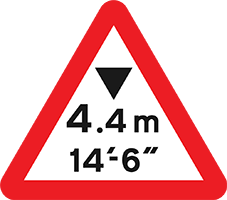
Heights on these signs are rounded: for safety's sake they are always rounded down.
But how exactly are they rounded? The Department for Transport's traffic signs manual (chapter 4, 2018) gives the rounding rules separately for metric and imperial:
For imperial:
7.4 The imperial figure shown on signs to indicate the available headroom should be at least 3 inches less than the measured height to allow a safety margin. If the resulting figure is not a multiple of 3 inches, it should be rounded down to the nearest lower multiple of 3 inches.
For metric:
7.5 To obtain the metric figure shown on signs, the bridge height should be measured to two decimal places, rounding down to the nearest 0.01m. The following method is then used to calculate the appropriate signed height:
- if the second decimal digit is 8 or 9, delete it and sign the bridge with the remaining whole number and the first decimal digit,
- if the second decimal digit is 7 or less, delete it and reduce the first decimal digit by 1. Sign the bridge with the remaining whole number and first decimal digit, as reduced.
These aren't equivalent – it is possible for the same metric measurement to have different Imperial measurements, and vice versa!
For each measured bridge height, here's what the sign should read:

In between 3 and 4 metres alone, there are 22 possible signs!
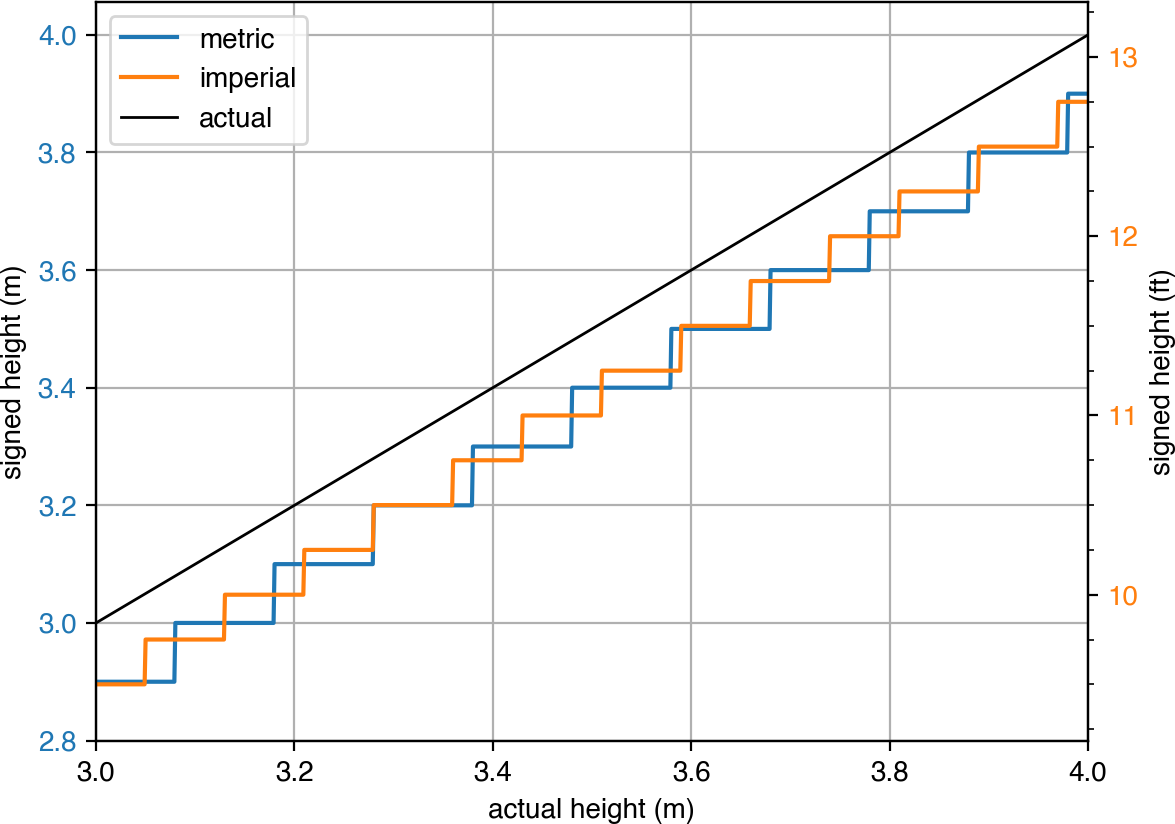
This website is dedicated to finding all the possibilities. Join the Height Hunt!
Why are some signs circles and some triangles?
Circular signs represent mandatory orders (no vehicle above this clearance may pass), and triangular signs represent warnings. The current version of the traffic signs manual, chapter 4, recommends circles for non-arch bridges:

7.7.1 Mandatory signs should normally be used at non‑arch bridges, as they can give more effective protection than warning signs. [...]and triangles for arch bridges:
7.7.3 It is not recommended practice to place a warning sign [...] on a non‑arch bridge as an alternative to a mandatory sign. [...]


7.8.1 Mandatory signs are not used at arch bridges, as the main risk to these comes from vehicles which, although low enough to pass through the central part of the arch, might strike the curved shoulder of the structure. [...]
It is not clear to me why one shape gives 'more effective protection' than the other.
This recommendation has not always been the case.
Until 1944, signs warning of upcoming low bridges merely warned of a 'low bridge', with no specific restriction. The bridge itself was marked with a rectangular black-on-white plate, giving the headroom. (You can still find some of these on older bridges!)
But in 1944, advance warning signs were modified to include specific height restrictions [1]. The bridge plate remained the same:

1944
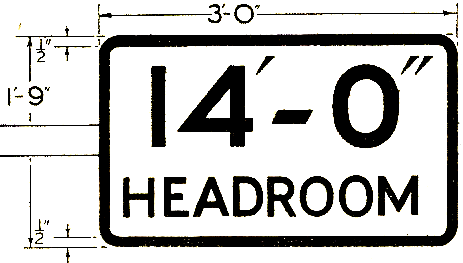
1944
In 1963, the UK's road signs were refreshed following the Worboys report. Existing signs were denounced as small, too dependent on text, and with their all-caps, black-on-white messages, unsuitable for modern, high-speed driving. Instead, colourful continental-style symbols, along with the familiar new typeface, were brought in.
Under this system, the only option for signing height restrictions was the triangle. There were two versions: the one for use on the structure itself had the bottom black triangle removed to allow for larger numerals, compensating for being mounted at height: [2, 3]

1964

1964
In 1975, circles became available available if the authorities applied for a traffic regulation order. Ignoring this sign would constitute an offence under Section 36 of the Road Traffic Act (similar to running a red light – something that the police could prosecute quickly). The application was considered a bit of a faff so low-risk flat bridges, and of course arch bridges where very thin vehicles could legitimately pass through, continued to use triangles: [4, 5]
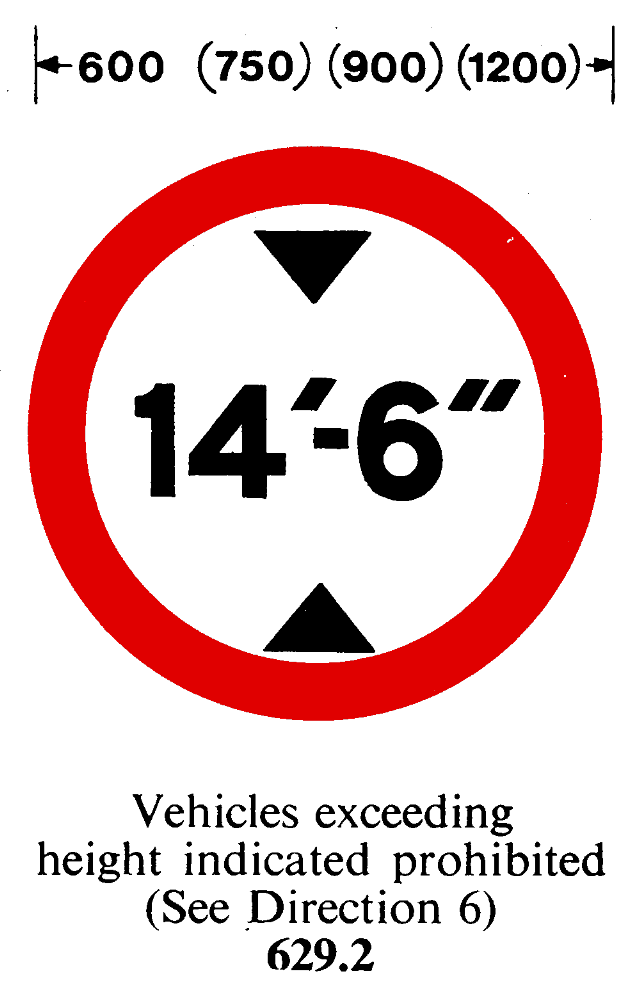
1975
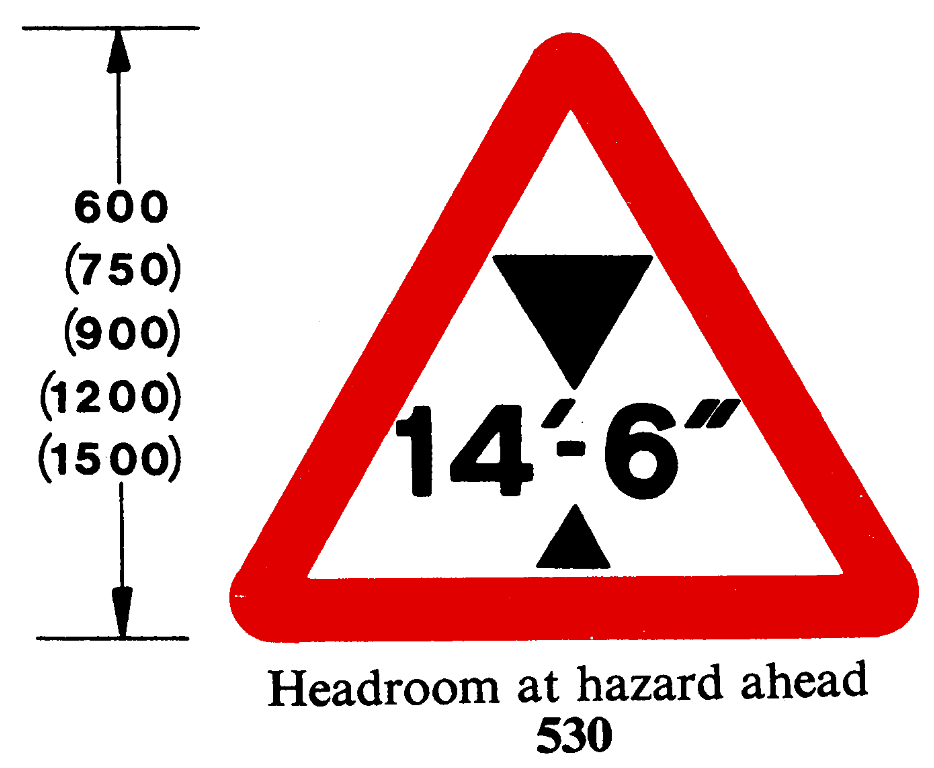
1975
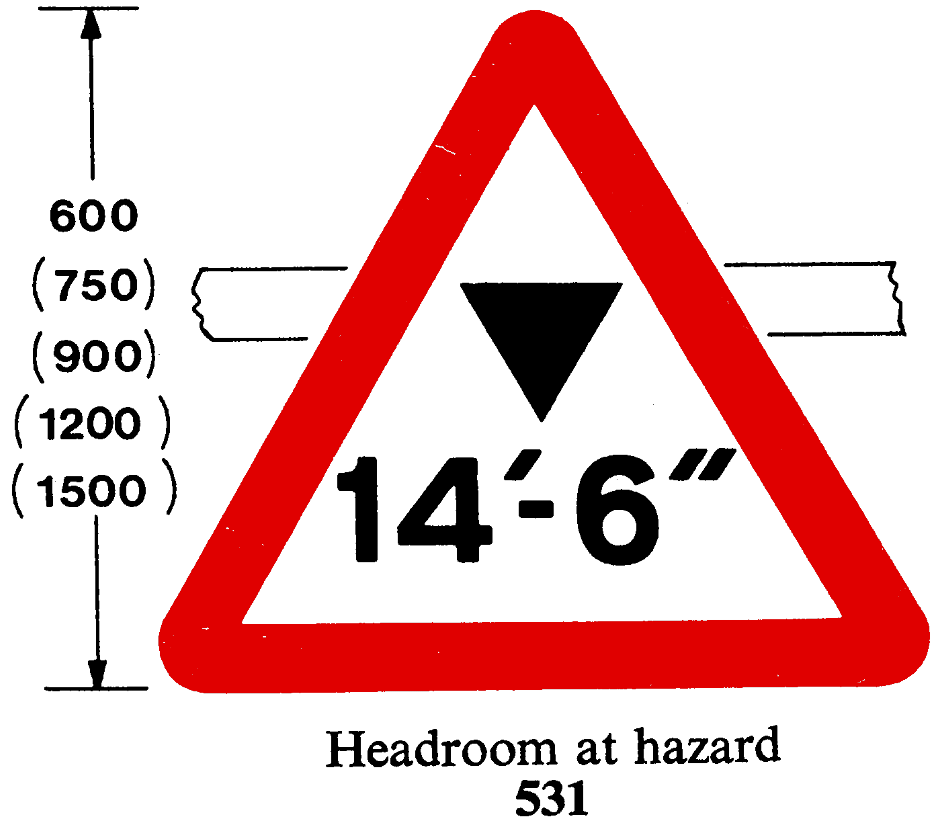
1975
In 1981, the second type of triangle (without the lower black triangle) was dropped – warning signs both in advance and on the structure would now look the same.
In 1994, the requirement for the traffic regulation order was dropped and enforceable circles became recommended. Bryn Buck gives a good history on his excellent blog.
All this means that you sometimes see triangles where you expect circles.
How long have signs been dual unit?
Metric heights were first permitted in 1981, but on separate, adjacent signs to their imperial counterparts. The traffic signs manual didn't specify what these should look like, more than just saying 'metric units may be substituted for imperial units', leading signmakers to... guess? [6, 7]

1981
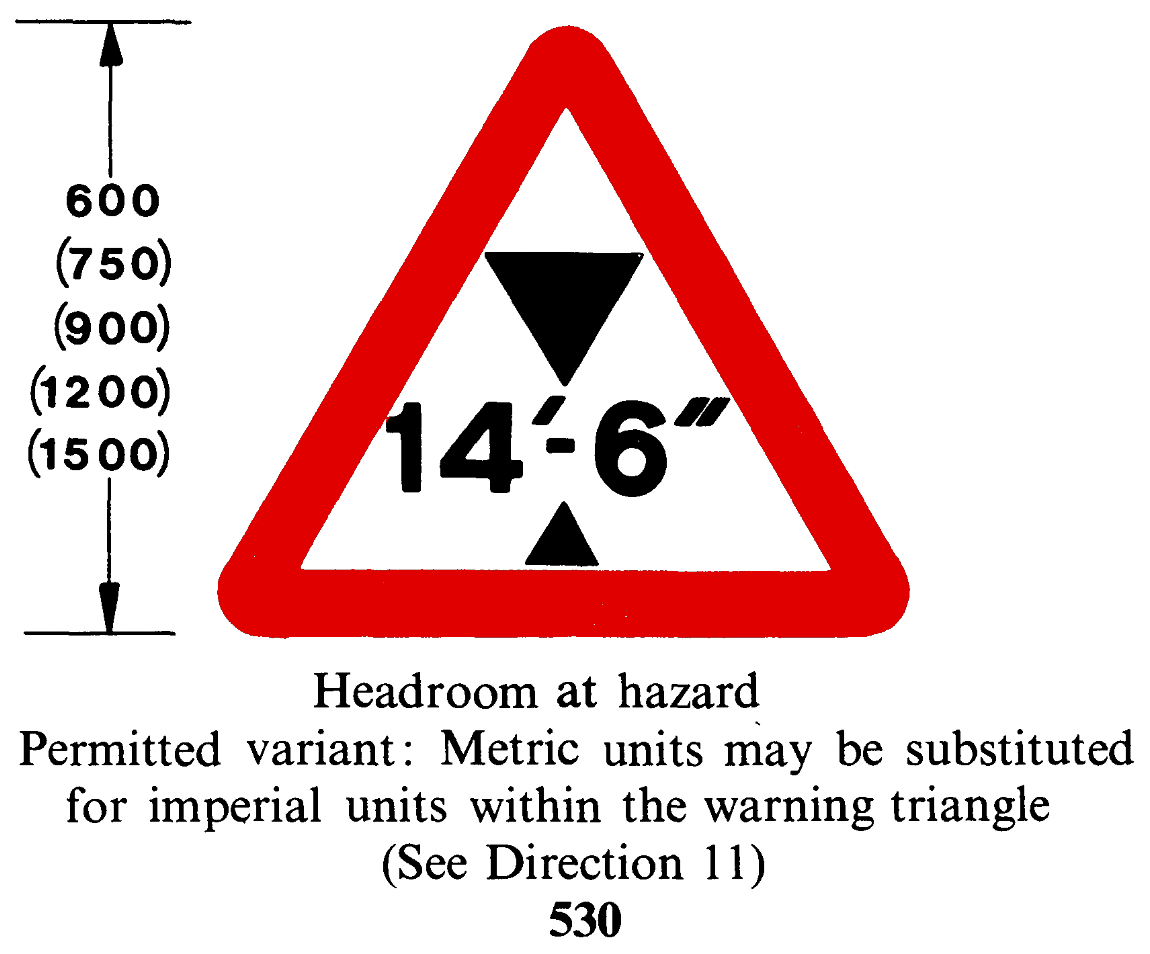
1981
The metric signs which had become conventional were formalised in 1994, when the first dual-unit circle was also introduced. These had to be one size bigger to account for the extra line of text: [8]

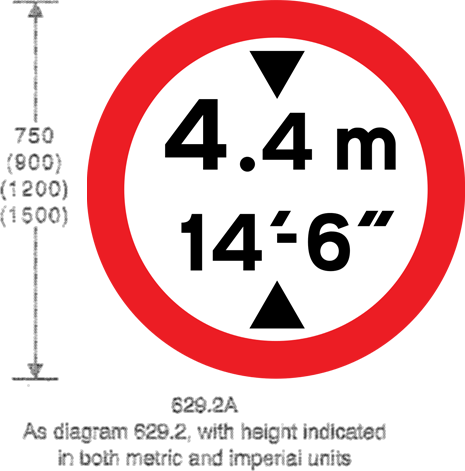
1994
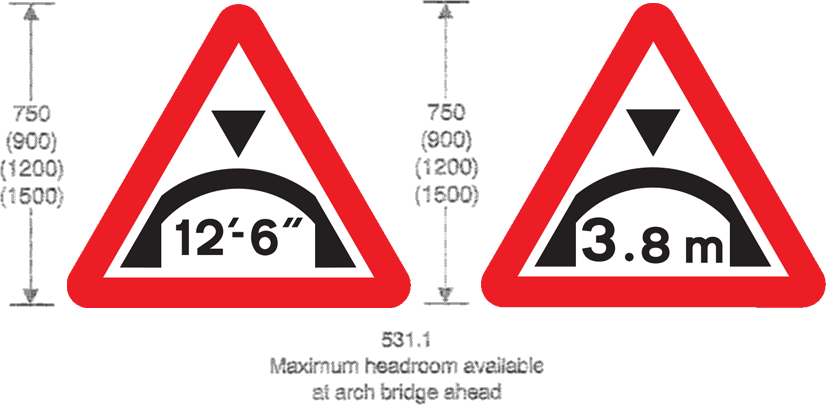
1994

1994
Dual-unit circles become mandated on new signs, along with new dual-unit triangles in 2016: [9]
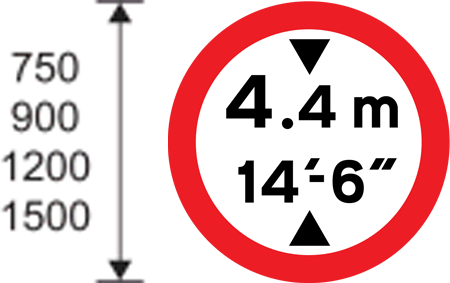
2016

2016
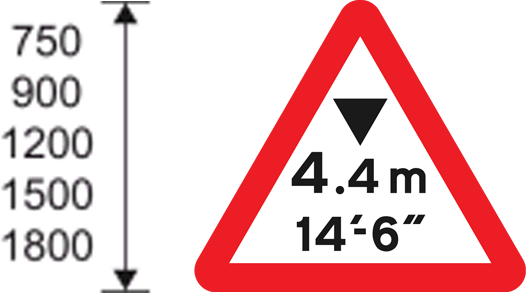
2016
In the Height Hunt, we are only interested in dual-unit signs, so we expect to see more circles than triangles.
Why are you doing this?
Because this is only a funny MathsJam talk if I've actually committed to it.
References and licensing
[1] Report of the Departmental Committee on Traffic Signs (composite)[2] The Traffic Signs Regulations and General Directions 1964
[3] Twitter
[4] The Traffic Signs Regulations and General Directions 1975
[5] Twitter
[6] The Traffic Signs Regulations and General Directions 1981
[7] Twitter
[8] The Traffic Signs Regulations and General Directions 1994
[9] The Traffic Signs Regulations and General Directions 2016
Contains public sector information licensed under the Open Government Licence v3.0.